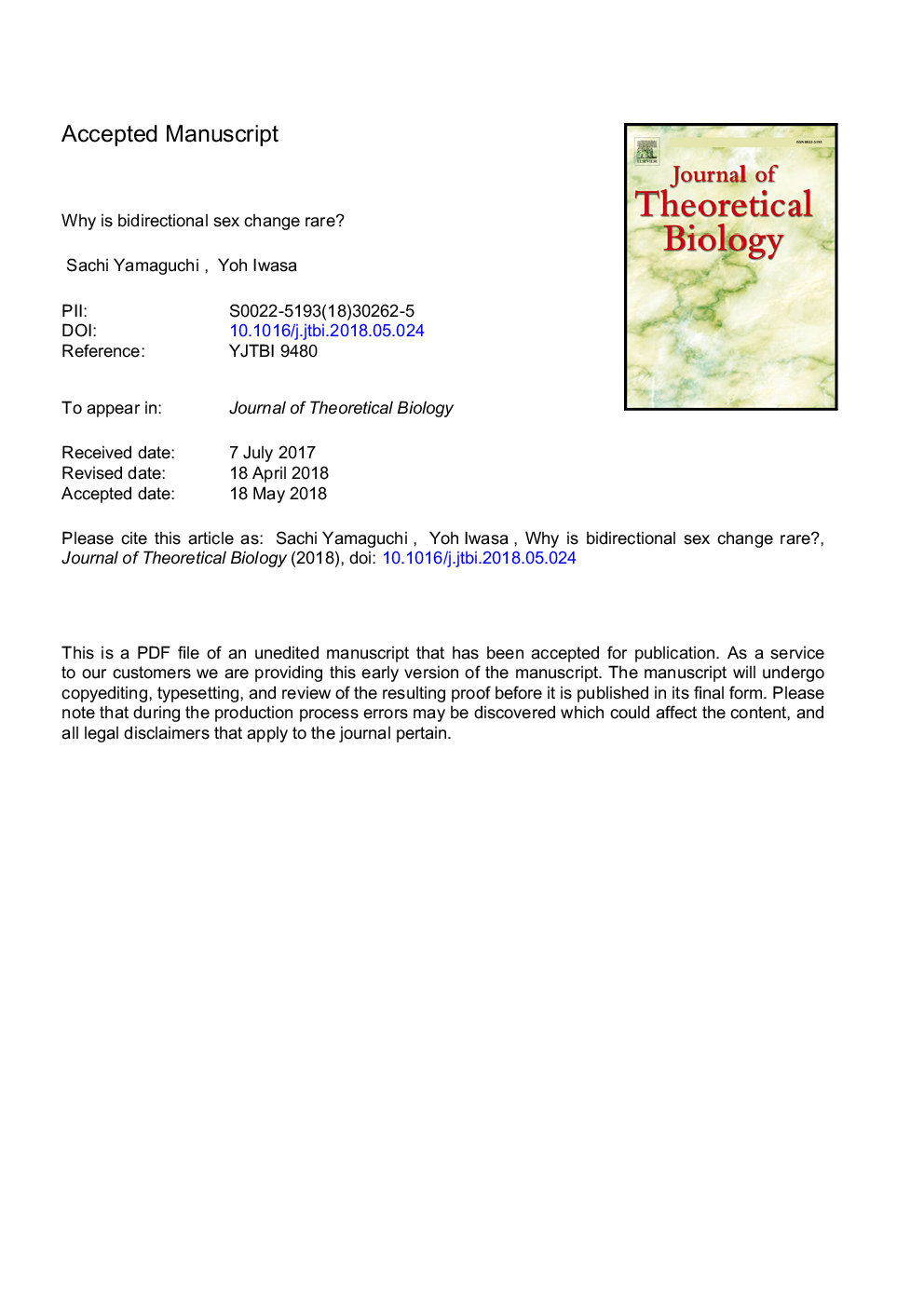| کد مقاله | کد نشریه | سال انتشار | مقاله انگلیسی | نسخه تمام متن |
|---|---|---|---|---|
| 8876615 | 1623757 | 2018 | 42 صفحه PDF | دانلود رایگان |
عنوان انگلیسی مقاله ISI
Why is bidirectional sex change rare?
ترجمه فارسی عنوان
چرا تغییر جنسیت دو طرفه نادر
دانلود مقاله + سفارش ترجمه
دانلود مقاله ISI انگلیسی
رایگان برای ایرانیان
موضوعات مرتبط
علوم زیستی و بیوفناوری
علوم کشاورزی و بیولوژیک
علوم کشاورزی و بیولوژیک (عمومی)
چکیده انگلیسی
Various species of fish living in coral reef communities show sequential hermaphroditism, or sex change. In a typical case, an individual first matures as a female, and later, when it becomes dominant in the mating group, it becomes a male (i.e., protogynous sex change). Many species show only unidirectional changes but some of coral reef fishes exhibit bidirectional sex changes, in which even a dominant male may revert to female when a socially more dominant competitor arrives. However, bidirectional sex change has rarely been observed in natural conditions, even among those species exhibiting it under experimental conditions. Here we explain the rarity of bidirectional sex change by studying dynamics of hormones controlling sex expression. We consider social status factor, SF, which is elevated when the individual becomes more dominant in the mating group. When the SF level is high, the dynamics would culminate with low estradiol expression and high testosterone expression, suggesting a male phenotype. In contrast, when SF level is low, the system converges to an equilibrium with high estradiol expression and low testosterone expression, suggesting a female phenotype. There is a parameter region in which the dynamics exhibit bistability. The model demonstrates hysteresis: as SF increases smoothly, the system undergoes a sudden transition in the levels of sex hormones. The model can explain why species show unidirectional sex change, in that an individual's switch to a new sex is irreversible, even if the individual's social situation returns to the original subdominant status.
ناشر
Database: Elsevier - ScienceDirect (ساینس دایرکت)
Journal: Journal of Theoretical Biology - Volume 453, 14 September 2018, Pages 136-145
Journal: Journal of Theoretical Biology - Volume 453, 14 September 2018, Pages 136-145
نویسندگان
Sachi Yamaguchi, Yoh Iwasa,
